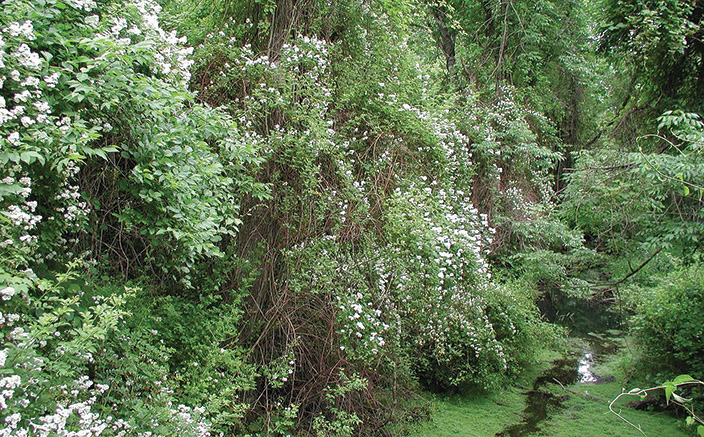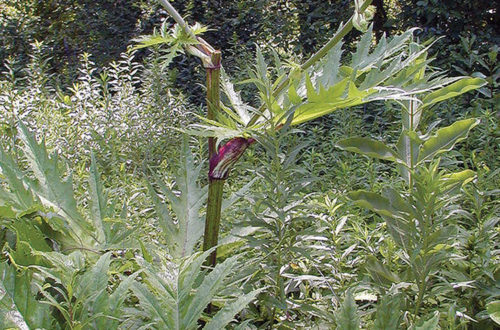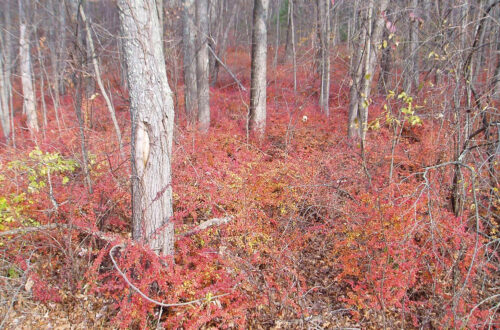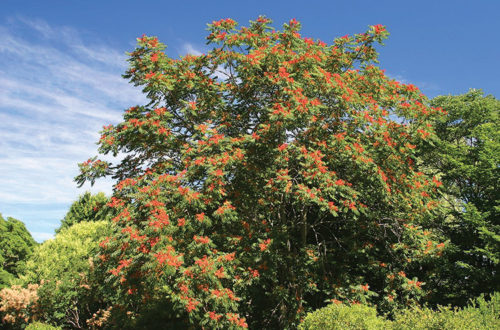MAY-JUNE 2017 – Multiflora Rose (Rosa Multiflora) is a deciduous shrub that flowers from May to June and fruits in September and October. It can reach 15 feet in height and 10 feet in width.
It forms dense thickets and can also climb like a vine. Unfortunately, clearing it out be a thorny proposition.
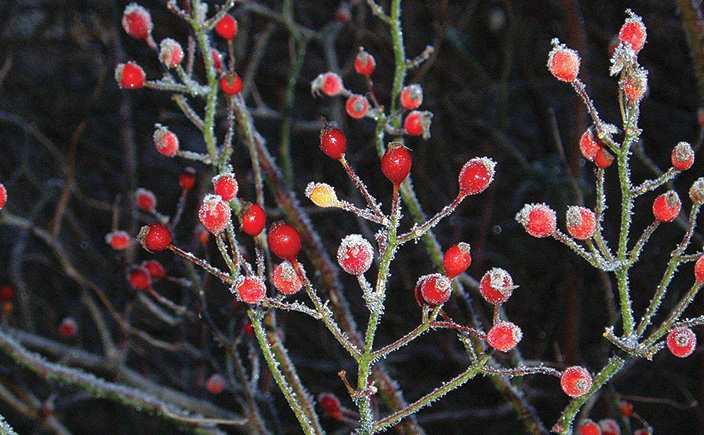
It spreads by seed, suckering and branch tip layering. Wildlife help disperse the seed when they eat the hips, which it produces in great numbers. A large plant can produce 500,000 to a million seeds than can survive in the soil for up to 20 years. Wow.
It often grows along streams and roads; and in old fields, pastures, open woodlands and disturbed areas. It prefers full sun and moist, well-drained soil.
History
Multiflora rose was introduced to the Eastern U.S. from Asia as a rootstock for ornamental roses in the 1860s. Since then it has been recommended for several uses including: a cover for wildlife, erosion control and as a living fence. It has also been used as a highway median to serve as a crash barrier and to reduce headlight glare.
Rose Rosette Disease (RRD)
Not only does multiflora rose displace native plant species, it can impact the nesting of native birds and is a vector for rose rosette disease. Rose rosette virus (RRV) is a native virus (Emaravirus) spread by microscopic eriophyid mites (Phyllocoptes fructiphilus). You may know the mites as gall mites or rust mites. The disease is also know as witches’-broom of rose.
Multiflora rose is highly susceptible to the disease/mite and, therefore, serves as a reservoir of both the inoculum and the vector. Do not plant roses within 100 yards of multilfora rose. For more information on RRD/RRV go to our samples page at conngardener.com
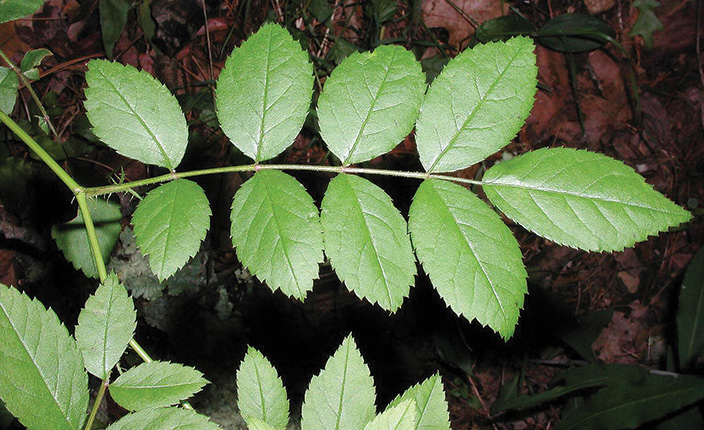
Identification
• Long, arching stems can be greenish or reddish in color.
• Recurved thorns, often in pairs. Thorns may sometimes be absent.
• Alternate, compound leaves comprising 5-11 (usually 7-9) oval or lance-shaped leaflets with toothed edges.
• There is a feathery, fringed stipule at the base of each compound leaf.
• Clusters of small, white, five-petaled flowers held in corymbs appear in May. Some varieties have pink flowers.
• Reddish 1/4-inch rosehips appear in the summer and persist through the winter.
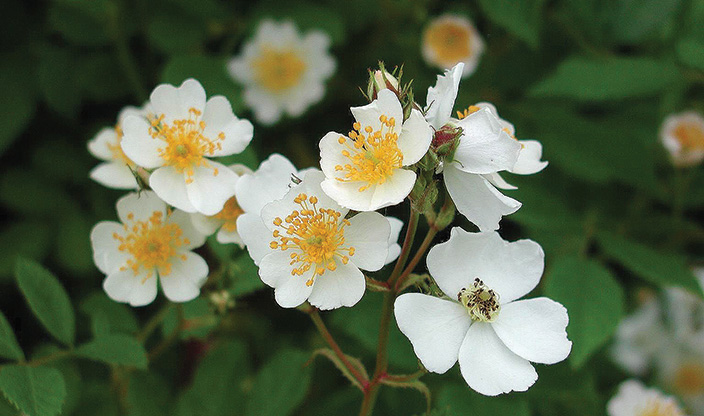
Look-alikes
Swamp rose (Rosa palustris), pasture rose (Rosa carolina), Allegheny blackberry (Rubus allegheniensis) and flowering raspberry (Rubus odoratus).
The distinguishing feature? Multiflora rose has both upright arching stems and fringed stipules. Native roses usually have pink flowers and lack the fringed stipule.
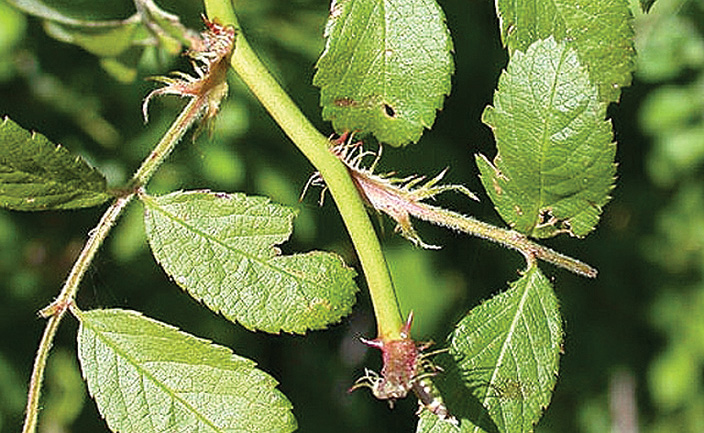
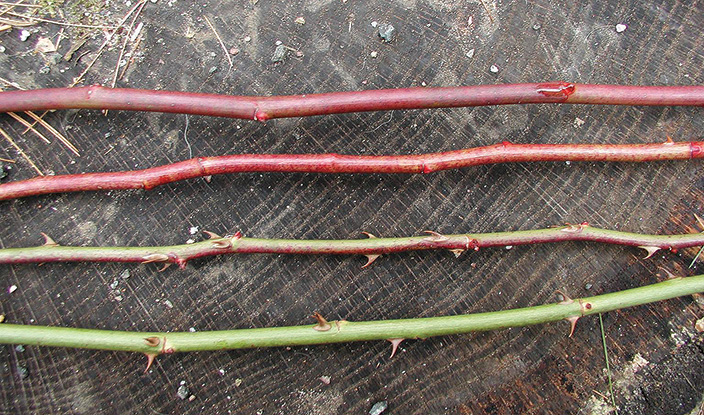
Mechanical Control
Hand pull small plants or dig and pull larger plants. Try and get all of the roots as they can resprout.
Regular mowing over a few years.
Chemical Control
Apply glyphosate to cut stems (painting). The best time is in the fall when nutrients are being directed to the roots.
Herbicides can also be applied as a foliar spray but we can’t recommend the practice.
Native Alternatives
• Highbush Blueberry (Vaccinium corymbosum)
• Chokeberry (Aronia)
• Raspberry (Rubus)
• Summersweet (Clethra alnifolia)
• Swamp Rose (Rosa palustris)
• Virginia Rose (Rosa virginiana)
• Winterberry (Ilex verticillata)
For more information, go to the website of the Connecticut Invasive Plant Working Group at cipwg.uconn.edu
– Will Rowlands
